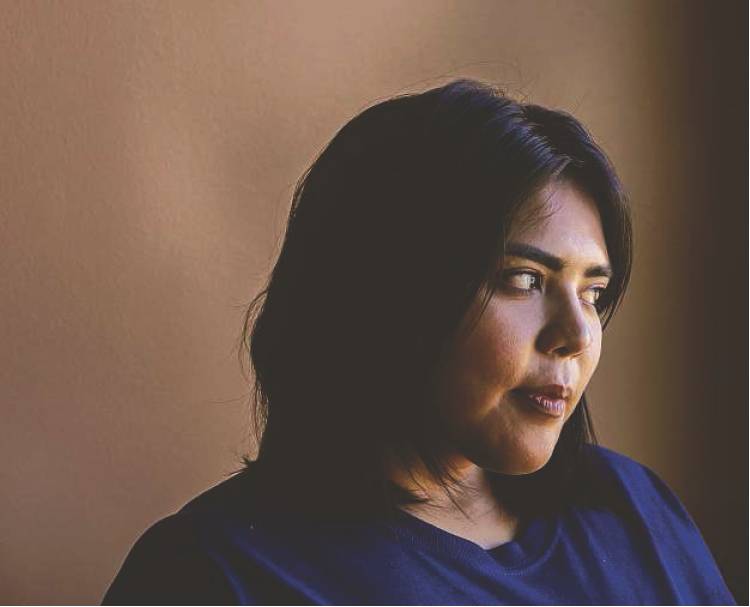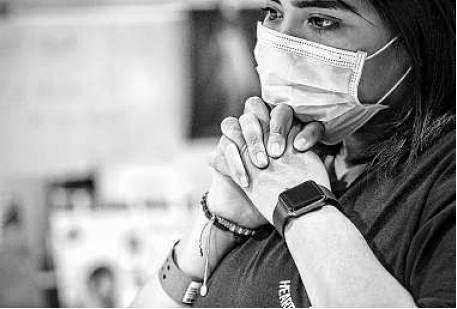New ways to take on TB might come from S.A.
Research institute to run one of first training centers in U.S.
By Peggy O’Hare STAFF WRITER
Faced with a resurgence of tuberculosis, Texas Biomedical Research Institute has been chosen by the National Institutes of Health to run one of the country’s first training centers to research and develop new strategies for the deadly disease.
Texas was responsible for 12 percent of tuberculosis cases in the country in 2020 — second only to California at 24 percent, according to a Centers for Disease Control and Prevention report. These two states, along with New York and Florida, have long accounted for half the tuberculosis cases in the country.
Commonly known as TB, the bacterial infection can be spread through the air from one person to another. Those with active cases may suffer from a productive cough, night sweats and extreme weight loss to the point of emaciation.
The illness can be fatal if patients aren’t treated with a rigorous course of antibiotics.
That doesn’t include up to 13 million people in the United States with latent or dormant TB infections, who show no symptoms of the illness but carry the bacteria in their lungs, possibly for years, according to CDC estimates. Those patients may never show symptoms unless their immune system becomes compromised through older age or circumstances such as undergoing cancer treatment.
Children and adults in the U.S. aren’t vaccinated for TB, unlike many other countries, where the illness is more prevalent or poses a higher burden. Many middle-aged Americans may remember receiving a multipronged skin test on their inner forearms as children to check if they had been exposed to TB — but that was a test, not a vaccination.
Texas Biomed, based in San Antonio, will receive about $5.8 million from the NIH over a five-year period to support the Tuberculosis Research Advancement Center, which will train what local health officials call the “next generation” of TB researchers.
San Antonio also is home to the nation’s only freestanding tuberculosis hospital, the Texas Center for Infectious Disease, a 75-bed facility on the South Side at 2303 S.E. Military Drive where TB patients typically stay from six months to two years while recovering from the disease, according to the hospital’s website. The hospital will collaborate with Texas Biomed on this project, along with the local Heartland National TB Center, San Antonio Metropolitan Health District and UT Health San Antonio.
‘God, take me — I’m done’
Elizabeth Reyes, 30, has become familiar with the dreadful symptoms of TB. She’s been battling the illness for 17 months and has been an admitted patient for a year at San Antonio’s TCID, 200 miles from her home in Houston.
During her illness, Reyes lost almost 70 pounds, plummeting from 205 to 136 pounds in four or five months. Most of her hair fell out. She received numerous blood transfusions, some 50 units of blood. There are entire days when she was at her sickest that she still doesn’t remember.
To this day, she has no idea how she caught TB. None of her family members or friends ever became sick with it. When she told her father about her diagnosis, he gasped.
“It is a serious, deadly disease,” Reyes said. “I remember before I got hospitalized, I was (saying) ‘God, take me — I’m done.’ This pain, it was horrible. … It is traumatizing to look back on it.”
Reyes said her symptoms began in October 2020 while the COVID-19 virus crisis was in full swing. She experienced vomiting, severe coughing, fatigue, night sweats, fevers and chills. But she wasn’t properly diagnosed with TB for at least two months, though she went to her primary care physician three times and a hospital emergency room once.
That delay is not unusual.
“When people go into the doctor with pneumonia, TB isn’t the first disease they think about,” said Dr. Larry Schlesinger, Texas Biomed’s CEO and president and an internationally known expert on tuberculosis. “So the diagnosis is delayed. And with that delay, people can get sicker over months before a diagnosis is made.”
A social worker and a doctor at a Houston-area hospital eventually referred Reyes to the TB hospital in San Antonio.
“The doctor was like ‘You have to go — that’s life or death for you,’” she recalled.
Reyes is now nearing the end of her hospital journey. She expects to be released April 8. Most of her hair has grown back, and she’s able to walk around. She plans to return to Houston and look for a job.
Just before she became sick, Reyes had been laid off from her human resources job at a company that cleans airliners at Houston’s George Bush Intercontinental Airport. But she’s not worried about hospital bills. Patients pay no out-of-pocket costs for care at San Antonio’s TB hospital.
The hospital is run by the Texas Department of State Health Services, so the costs of patient care are covered by the state’s general revenue funds. If a patient has health insurance, the TB hospital will bill the insurance company, but even an insured patient won’t pay anything out of pocket for their stay, said Shannon Brown, the hospital’s case manager and a nurse.
Texas areas of concern
Trainees participating in the new Tuberculosis Research Advancement Center at Texas Biomed will get bedside experience with patients at the TB hospital, discuss treatment management and toxicities, work in research labs, learn about animal models that can be used to help develop new drugs or vaccines and go to field sites such as the Texas-Mexico border to learn how clinical trials are conducted.
The NIH is expected to fund up to four other such centers but hasn’t yet announced where those will be.
All the centers, including the one in San Antonio, will focus on research to boost the understanding of TB and will strive to develop new innovations and strategies that better diagnose, treat and prevent the illness, according to federal guidelines published on the NIH grants’ website. Trainees in the San Antonio program will include postdoctoral researchers developing their own careers, staff scientists and perhaps some faculty wanting to incorporate TB into their research.
The NIH’s investment indicates it’s taking tuberculosis very seriously, said Dr. Joanne Turner, Texas Biomed’s executive vice president for research, who has focused in particular on the illness during her career.
“I think it’s a very complicated infectious disease to beat,” Turner said. “It’s going to require a lot of scientists investing a huge amount of their time to be able to fight it and combat it.
“If we could eradicate TB or minimize it to a manageable level, it would have a huge economic and health-related impact on the world.”
While the COVID-19 virus captured most of the news headlines in the past two years, TB still looms large in the background and continues to inflict devastation worldwide.
TB infected more than 10 million people and killed 1.4 million patients around the globe in 2019, the World Health Organization reported.
In Texas, 882 cases were reported in 2020, a decline from the 1,154 reported statewide in 2019, state data showed. But experts fear there are likely many more TB cases that are never properly diagnosed or reported to public health officials.
The illness turns up most often in Texas’ major metropolitan areas.
Houston, for instance, reported the largest percentage of tuberculosis cases in the state last year, at 15 percent, according to the Texas Department of State Health Services.
Houston was followed by Dallas County, which reported 11 percent of all such cases in Texas last year, Harris County at 9 percent, Bexar County at 8 percent and Tarrant County at 6 percent, state data revealed.
The Texas-Mexico border is a concern. Eleven of Texas’ 32 border counties accounted for 18 percent of tuberculosis cases across the state in 2021, data showed.
Among those who develop TB and don’t get treatment, 30 percent to 40 percent will die, Texas Biomed’s Schlesinger said.
TB is treated with a multidrug cocktail that requires patients to take medications every day for many months because it takes a long time to kill the bacteria. At one point, Reyes recalled, her treatment plan required her to take 35 pills a day.
Patients must be diligent about taking their medication. If not, there’s a risk the TB will mutate and become resistant to treatment.
Highest numbers since 2005
In decades past, before any treatment was available, patients were often kept at TB sanatoriums, where they were exposed to fresh air and sunlight to help them heal. Many times, these sanatoriums were on mountains. Patients would sometimes stay there for months to years, Turner said. But those sanatoriums stopped being used as antibiotics to fight the illness became available.
And even after patients recover, they can contract TB again, especially if they don’t practice healthy habits.
“It’s not like you develop immunity because there’s so many different types of TB,” said Brown of the TB hospital.
Schlesinger noted San Antonio has many predisposing factors for the illness, such as people lacking access to medical care or suffering from obesity or diabetes.
Because public health infrastructure across the nation hasn’t had adequate resources for years — and was largely redirected to focus on the COVID-19 virus — other infectious diseases that needed to be identified and treated essentially took a back seat, he said.
“So there’s currently a resurgence not just of tuberculosis, but of many infectious diseases that will create even a bigger challenge for us going forward,” Schlesinger said. “With regard to tuberculosis, the numbers in the U.S. and worldwide are increasing. In fact, in the U.S., the current number of cases — 1.5 million — is higher than it’s been since 2005.
“We need to identify cases early and begin treatment early. If it’s delayed and we don’t have the resources, then we can expect people to get very sick and die from tuberculosis.”
Dr. Lisa Armitige, assistant medical director of Heartland National TB Center and based at the Texas Center for Infectious Disease’s campus in San Antonio, said she is excited about this endeavor.
“These types of opportunities bring funding ... into what we’re trying to do to help our patients,” she said. “Anything from more accurate testing, shorter regimens, less toxic meds — these are all things we feel like our patients deserve.”
Reyes, the patient who’s been at the San Antonio hospital for a year, said people suffering from the symptoms she experienced should ask to be tested for TB.
“If you still don’t feel good,” she said, “get a second opinion.” pohare@express-news.net |
Twitter: Peggy_OHare



